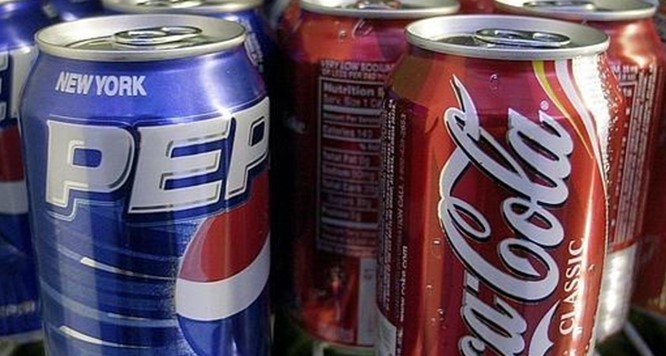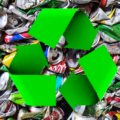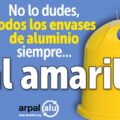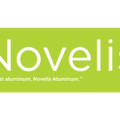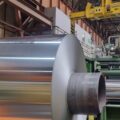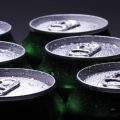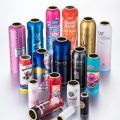For 17 years, the Global Footprint Network (GFN) has been calculating and announcing Earth Overshoot Day. This date determines the point at which humanity’s annual demand for natural resources exceeds what the Earth can regenerate in the same year. For 2023, the calculated date is this Wednesday, August 2, and warns of the incompatibility of people’s lifestyles with the environment, which can be avoided by adopting the circular economy.
In this sense, the aluminum can is a practical example that demonstrates how we can consume without excessively impacting the extraction of the planet’s natural resources. That is why Ball Corporation, a world leader in sustainable aluminum packaging, has created a list of myths and truths about these containers:
MYTH #1: Recycled aluminum does not represent a relevant quantity and the demand for cans only favors the extraction of primary aluminum.
Recycled aluminum plays an important role in its industry and contributes significantly to reducing the demand for primary aluminum, as well as being more attractively priced for companies. This, coupled with its quality and infinite recyclability without any loss of properties, explains why 75% of all aluminum produced in the world is still in circulation. In Chile, the rate is 33%, but initiatives such as the Social Bank of Cans are working to raise it. Meanwhile, in Ball, around 80% of the aluminum used in the production of cans is recycled.
MYTH #2: Aluminum cans are recyclable, but not as recycled.
Today, the can is known for being the most environmentally friendly packaging because it is 100% and infinitely recyclable, i.e. the recycling process does not change the properties of the material, which means that the aluminum does not suffer any damage. downcyclingThe name is given to a material that loses quality in the recycling process and can only be used in lower value-added products, which is the case with other packaging.
The life cycle of the cans continues to be an example of short-term progress, as it is only 60 days. In practice, if a can leaving the markets is consumed and disposed of correctly, it will be back on the shelves in two months as a new can.
MYTH #3: Not all cans come back as a can after recycling
This myth does not represent something negative: since aluminum does not lose properties during the recycling process, it is common for a sheet of recycled material to be used to manufacture parts for electronics or electric cars, for example. Even the aluminum in these products could be converted back into a can in the future. Great, isn’t it?
In any case, the companies in this sector have worked hard to ensure that the amount of recycled aluminum continues to increase. This is the case of Ball, a world leader in aluminum packaging, which has a formal goal of reaching 85% recycled content per can worldwide by 2030.
MYTH #4: Aluminum cans affect the taste of beverages
In reality, cans are internally coated with a resin that protects the liquid and ensures that there is no interaction between the aluminum and the product. Therefore, the flavor is not affected, and the packaging offers protection so that the flavor of the beverage is not altered by the incidence of UV rays.
TRUTH #1: The can recycling process has several significant environmental benefits
Recycling can consume much less energy than producing primary aluminum, 95% less to be exact, which translates into lower greenhouse gas emissions. It also saves natural resources, reduces the amount of waste and helps preserve bauxite reserves, which is the main source of primary aluminum.
TRUTH #2: Aluminum cans help increase the income of about one million families.
Due to its attractive price, aluminum is one of the recyclers’ favorite materials: between 2005 and 2021, more than R$20 billion in additional revenue was generated for these champions of the circular economy, according to Abralatas.
TRUTH #3: Today you see “everything” in the can!
The growth of the aluminum can market and consumer demand for more sustainable products has driven the launch of new can categories. Today, not only traditional bottled beverages, such as beer, energy drinks and soft drinks, but also wine, ready-to-drink beverages and water are now included.
Ball Corporation is a pioneer in new categories for beverages in the world and in the region, with the launching based on studies and tests carried out that allow the beverage to reach the consumer’s hand with quality, who values sustainability and practicality in new consumption occasions.
” According to Global Footprint Network calculations, human demand corresponds to more than 1.6 planets Earth, and the data suggests consumption equivalent to two planets long before we reach the middle of this century,” reflects Estevão Braga, Ball’s Sustainability Director for South America. He adds: “This is what Ball is working against. We want to slow and reverse this scenario by doing our part as industry leaders and following our Climate Transition Plan, a detailed document that guides us with strategies and actions toward meeting our sustainability goals and a future of compatibility between our lives and the life of the planet. The awakening to the need for more sustainable options means that the aluminum can, which fits in the palm of the consumer’s hand, carries much more than the beverage: an infinite trajectory, an example of circular economy.”

